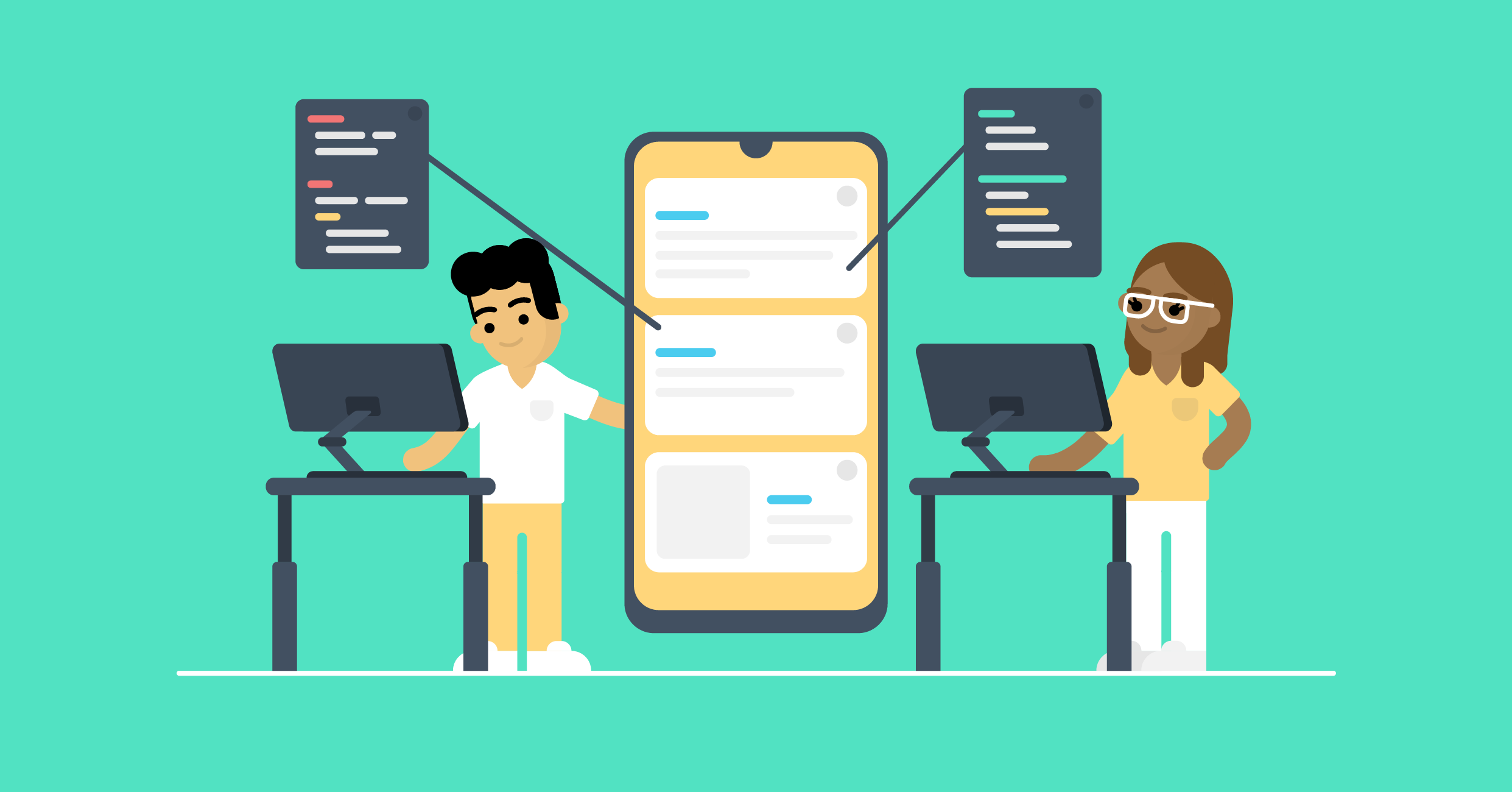You’re a software engineer. You use your talents to build the future.
Well, once you get the job.
There’s one thing in your way:
The huge pile of other resumes sitting on the recruiter’s desk.
It’s time to make your talents stand out.
In this guide, we take you through a step-by-step process to creating a software engineer resume that gets results.
- An example of a finished software engineer resume that works
- How to write a software engineer resume that’ll fill up your interview diary
- How to make your software engineer resume stand out [with top tips & tricks]
For some inspiration, here’s a software engineer resume example, created with our very own online resume builder:
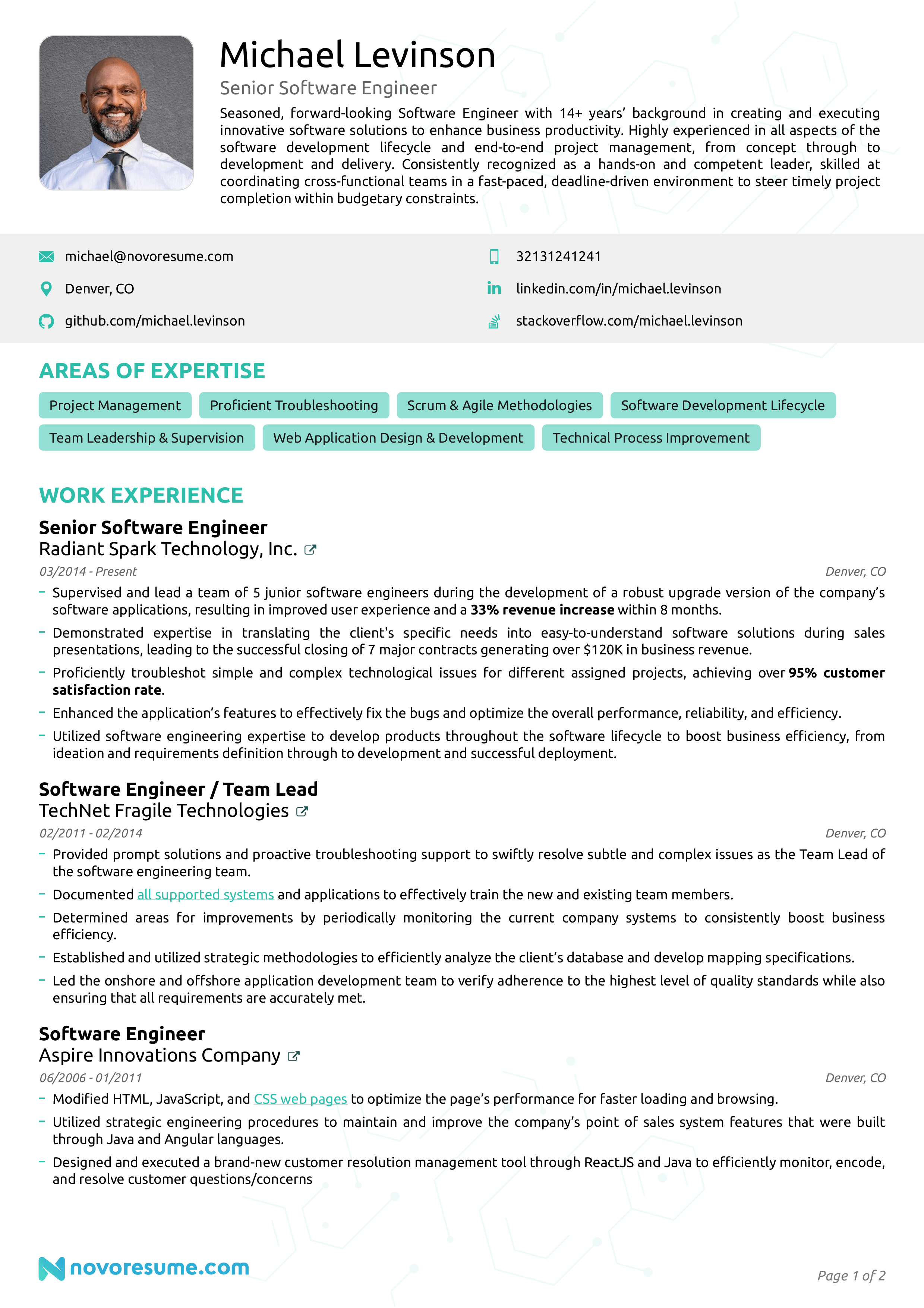

Looks good, right?! Now it’s time to create your own.
Besides the software engineer resume example, we've got a bunch more examples for professionals in the computer science field:
- Java Developer Resume
- Web Developer Resume
- Computer Science Resume
- Artificial Intelligence Engineer Resume
- Engineering Resume
- Data Scientist Resume
- Data Analyst Resume
- Data Entry Resume
- IT Resume
How to Format a Software Engineer Resume
Now, before you can highlight your talents, you need to format your resume correctly.
Your resume should be easy to read and not be hard work for the recruiter to skim through.
The “reverse-chronological” resume format is the most commonly used format, and we can see why. It positions your top talents at the top of your resume, so the recruiter can immediately see your value proposition.
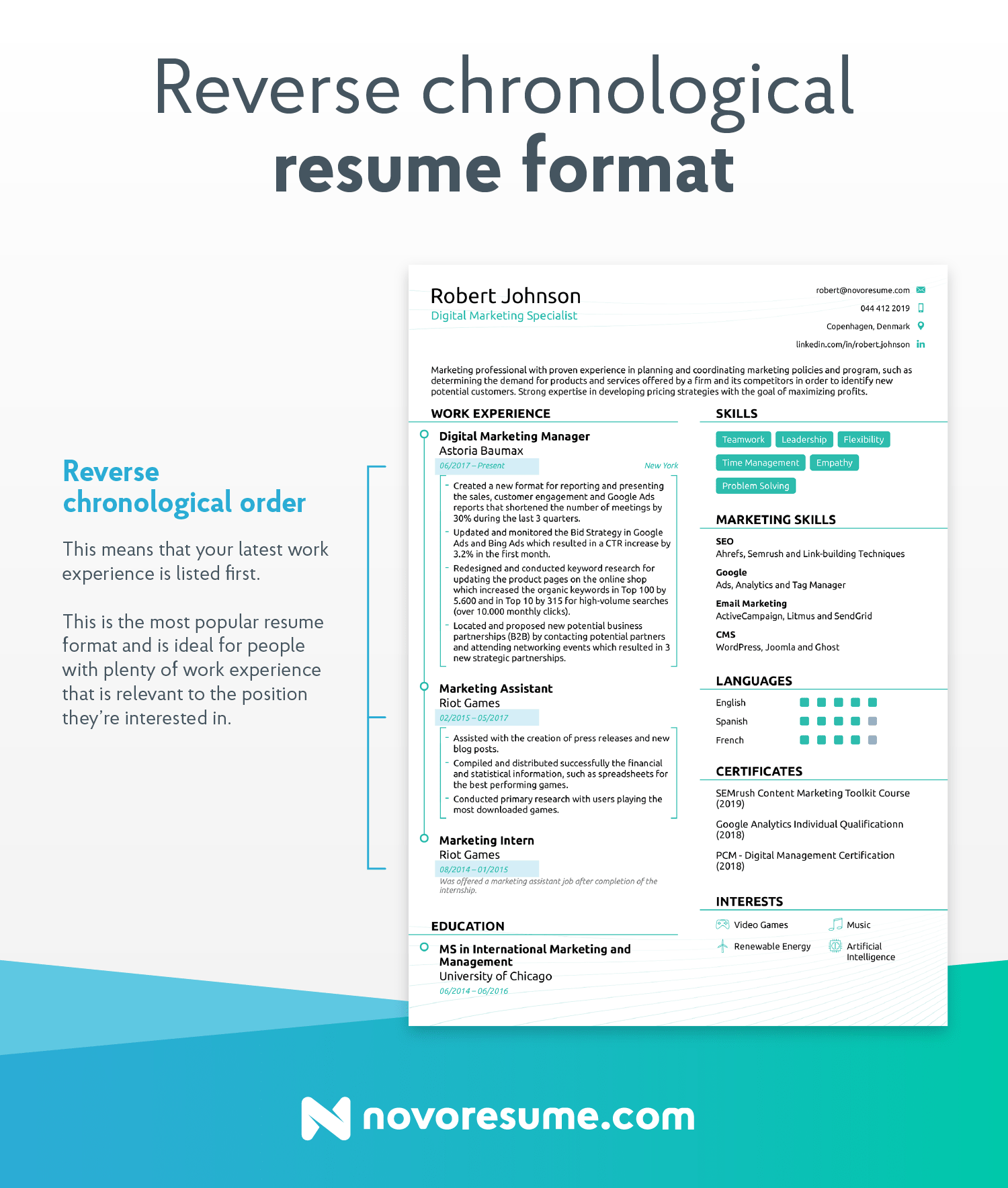
These software engineering resume formats also get our approval…
- Functional Resume – If you have strong software engineering skills, but a small amount of work experience, this resume format is recommended
- Combination Resume – The final format combines both “Functional” and “Reverse-Chronological” formats. As such, it is ideal for software engineers who have skills AND work experience.
Once you’ve chosen your format, you need to organize your resume layout.
Use a Software Engineer Resume Template
Word is a great application for creating documents.
However –
Creating a resume with text editors is a different story all together!
This is due to formatting issues.
In fact, there’s a chance your entire layout will fall apart as you make alterations.
Want to skip any formatting issues? Use a software engineer resume template.
What to Include in a Software Engineering Resume
The main sections in a software engineering resume are:
- Work Experience
- Contact Information
- Skills
- Education
Want to go a step further? You can also add these optional sections:
- Awards & Certification
- Languages
- Interests & Hobbies
Fantastic!
But wait – what should you write for each of these sections?
Read on to learn how.
Want to know more about resume sections? View our guide on What to Put on a Resume.
How to Correctly Display your Contact Information
Now, this section doesn’t need any creativity, but it must be factually correct.
Play close attention to this section – the last thing you want is an impressed recruiter who wants to interview you, but can’t contact you!
The contact information section must include:
- Full Name
- Title – Align this to the job description, which is “Software Engineer”
- Phone Number – Check this multiple times
- Email Address – Use a professional email address (firstname.lastname@gmail.com), not your childhood email (lozlovespizza@gmail.com)
- (Optional) Location - Applying for a job abroad? Mention your location.
- Lauren Hill - Software Engineer. 101-358-6095. laurenhill@gmail.com
- Lauren Hill - Ninja Software Engineer. 101-358-6095. lozlovespizza@gmail.com
How to Write a Software Engineer Resume Summary or Objective
Here’s a shocking fact for you –
Recruiters spend less than 6 seconds on each resume.
With hundreds of resumes to get through, it’s no surprise that recruiters simply glance over resumes looking for the most important information.
As such, you want to make the most important information clear to see.
The best way to do this is via a resume summary or objective, which are snappy paragraphs that go on top of your resume.
Their purpose is to quickly highlight why you are the best candidate for the software engineering job. They can be seen as a “small preview” to the rest of your resume.
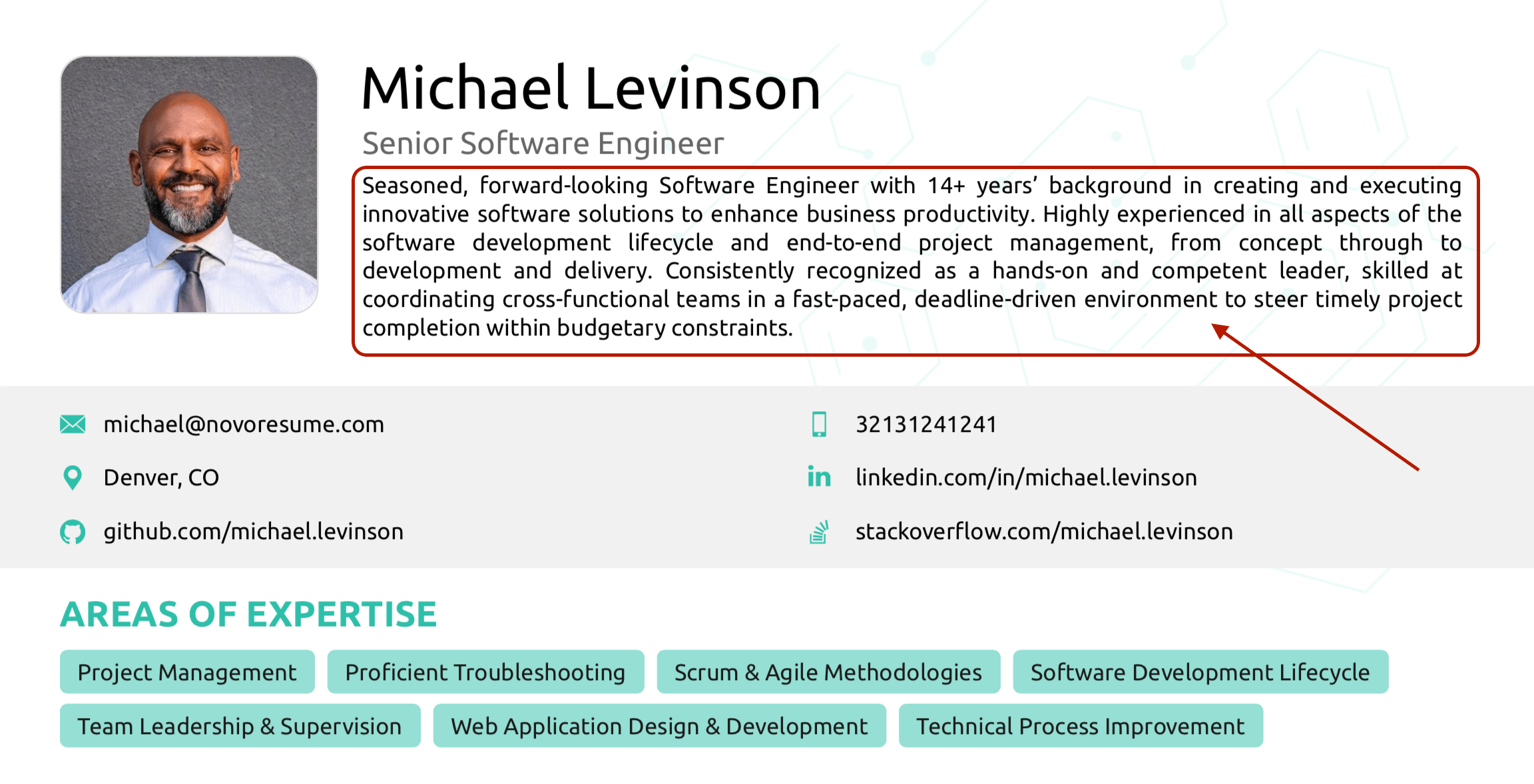
But what is the difference between the two sections?
A resume summary is a 2-4 sentence summary of your professional experiences and achievements.
- Experienced software engineer with a strong background in developing award-winning strategies for a diverse clientele. 12+ years of industry experience includes leading large engineering teams to achieve concrete goals on a strict deadline. Strong skills include Database management and MySQL, .NET and Java.
A resume objective is a 2-4 sentence snapshot of what you want to achieve professionally.
- Motivated software engineer looking to pursue a successful career in software development at Company X, where I can help in the delivery of state-of-the-art software solutions. Experience includes coding, troubleshooting, and testing for my own personal projects while at University X. Relevant skills include PHP, Data Structures, Machine Learning, and Debugging.
So, which one is best for your situation, summary or objective?
Generally, we recommend experienced software engineers go with a summary. If you have the skills but lack the industry experience, you should choose a resume objective (graduates, career changers, or those still studying).
How to Make Your Software Engineer Work Experience Stand Out
Recruiters want to know that you can do the job, and do the job well. The easiest way to instil confidence in the recruiter is with your work experience.
Here’s how we recommend you structure your work experience section:
- Position name
- Company Name
- Dates
- Responsibilities & Achievements
Software Engineer
ElectronicsX
03/2017 - 07/2020
- Built an ecommerce site integrated with multiple payment APIs for a 32% in company revenue
- Developed new infrastructure to easily handle over a million client files
- Consistently achieved 100% compliance with industry best practices
- Reduced security breaches by 84%
To separate your resume from the competition, you should highlight your top achievements. Doing so will allow the recruiter to see the obvious benefits in hiring you.
Instead of saying:
“In charge of infrastructure”
Say:
“Developed new infrastructure to easily handle over a million client files”
Simply put, the first statement doesn’t say much.
This is in direct comparison with the second statement that shows how your work benefited the company greatly. Hard numbers that prove your skills – can’t argue with that!
What if You Don’t Have Work Experience?
Not everyone will have a wealth of work experience.
Maybe you’re a graduate looking for your first engineering job?
The question is how to tackle this part of your resume when you have no experience.
The answer –
Talk about your internship experience, volunteering work, or any achievements at your place of education.
You can even create a portfolio of your own work!
There are several ways to build a portfolio (and even get paid for it):
- Pick up some relevant freelance gigs on UpWork
- Start you own software project as a side-hustle
Are you recent engineering graduate? Make sure to check out our student resume guide!
Use Action Words to Make Your Software Engineer Resume POP!
- “Made”
- “Worked”
- “Managed”
…are all common words that the recruiter sees time and time again.
However, you don’t want your resume to resume the competition, which means you should use power words to make your achievements stand out:
- Conceptualized
- Determined
- Formulated
- Initiated
- Spearheaded
B.A. in Software Engineering
The University of Chicago
2012 - 2016
• Relevant Courses: Software Engineering Project, Distributed Systems Development, Information Systems Modelling, Specification of Software Systems, Software Evolution, Software Quality, Agile Methods
• GPA: 3.8
Now, you may need more information. If so, here are the answers to some of the most frequent questions that we get:
What if I haven’t completed education yet?
- Regardless of whether you’re an engineering graduate or still studying, you should still mention every year of education to date
Should I include my high school education?
- Generally, only include your highest form of education. Therefore, include your high school education if you don’t have a relevant degree in engineering
What do I put first, my education or experience?
- Experiences are the priority, so those go first. If you’re a recent graduate, you will likely need to start with education
Need more information? Check out our guide on how to list education on a resume.
Top 10 Skills for a Software Engineer Resume
Your software engineer resume must do one thing—
Show that you’ll do a better job than the other candidates.
But how can you do this?
Well, by highlighting the right software engineer skills on a resume.
This is done by looking at the job description, and then comparing the skills needed with the skills you already have.
Put all relevant skills on your resume. Here are the most commonly used skills for a software engineer resume:
Hard Skills for a Software Engineer:
- PHP
- Data Structures
- Machine Learning
- Debugging
- Web Development
Soft Skills for a Software Engineer:
- Creative Thinking
- Communication
- Time-Management
- Research
- Team Player
- Try to sprinkle your skills throughout the document, not just in the skills section. You can drop some of your skills in the resume summary, education section, and work experience section.
Here’s a more comprehensive list of 101+ must-have skills this year.
What Else Can You Include?
That’s all of the essentials covered.
But ask yourself one question –
Does your resume stand out?!
The above sections should be enough to get you onto the shortlist, but adding some extra sections could be the deciding factor between you and another candidate.
Awards & Certifications
Have you won an award for your engineering work?
Have you completed any courses that improve your skills?
If you have any awards or certifications, be sure to list them in your resume!
Here’s an example:
Awards & Certificates
- “Advance Software Engineering” - Coursera Certificate
- “Critical Thinking Masterclass” - MadeUpUniversity
Languages
Even though you will unlikely need to speak an alternative language in your job, the skill is still impressive to any recruiter. As such, feel free to add a language section if you have space.
Rank the languages by proficiency:
- Native
- Fluent
- Proficient
- Intermediate
- Basic
Interests & Hobbies
Now, you’ll probably thinking, “why is my love of fishing relevant to the job application?”
Well, listing your hobbies allows the recruiter to get to know who you are.
They can also show that you’ll be a good part of the team, especially if you enjoy social activities.
Here’s which hobbies & interests you may want to mention.
Include a Cover Letter with Your Resume
Cover letters are just as important as they always have been.
You see, a cover letter instantly makes your application specific and more personal.
Unlike a generic resume that has been sent to ten other companies, a cover letter shows the recruiter that you want to work for their company.
For a winning cover letter, you need the correct structure. Here’s what we recommend:
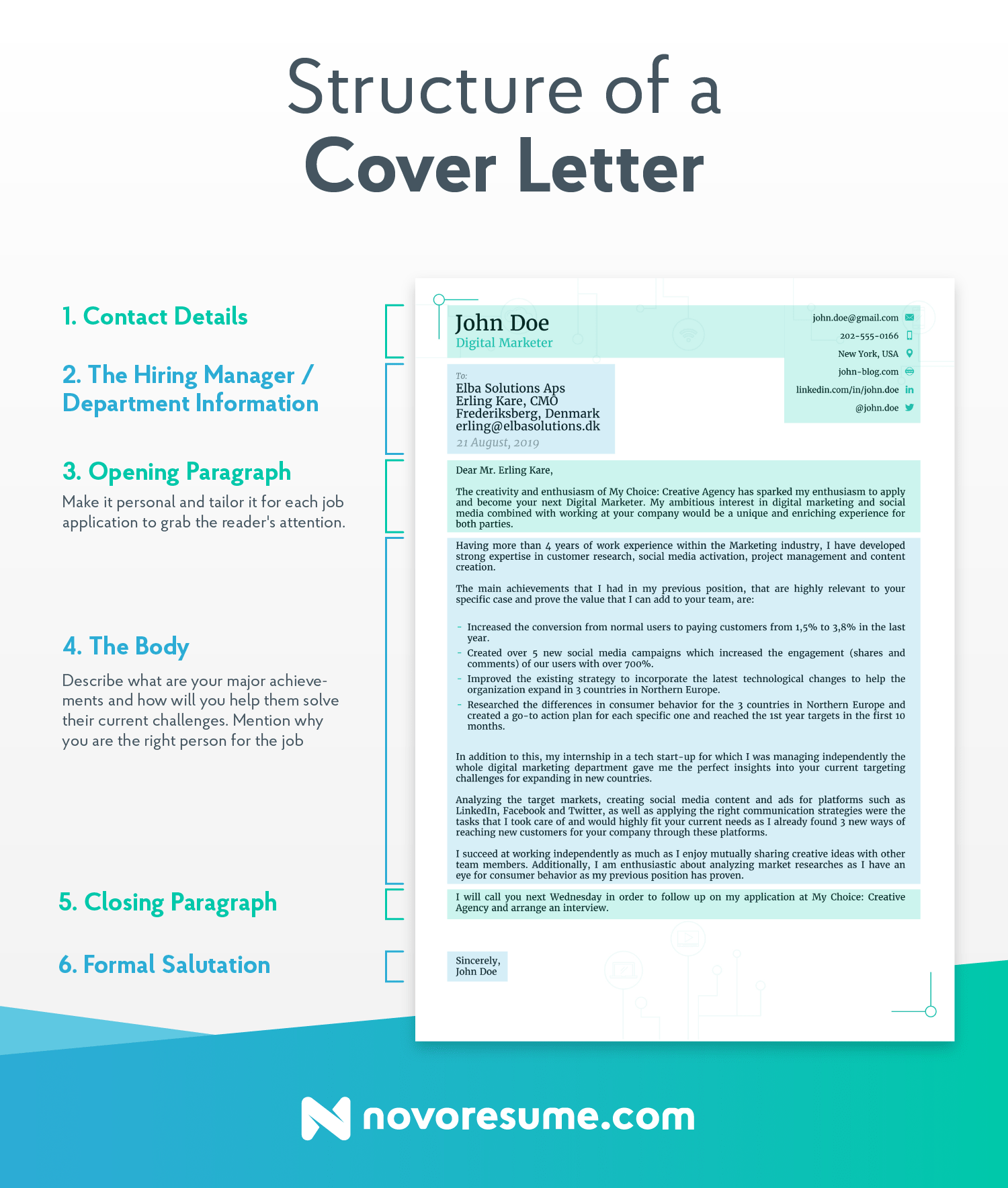
You should complete the following sections:
Personal Contact Information
Your full name, profession, email, phone number, location, and website (or Behance / Dribble).
Hiring Manager’s Contact Information
Full name, position, location, email
Opening Paragraph
As the recruiter will likely skim through your application, you need to win their attention within the first few sentences. Use concise language to mention:
- The position you’re applying for
- Your experience summary and best achievement to date
The Body
Now it’s onto the main body of the cover letter, where you should delve into the following specifics:
- Why you want to work for this specific company
- What you already know about the company
- How your engineering skills will help you to do the job
- Which similar positions have you held before
Closing Paragraph
To wrap up your cover letter, you should:
- Conclude the main points made in the body paragraph
- Thank the recruiter for the job opportunity
- Finish with a call to action that leaves the conversation open, such as “At your earliest opportunity, I’d love to discuss more about how I can help company X” will work
Formal Salutations
End the letter in a professional manner. Something like, “Kind regards” or “Sincerely.”
For more inspiration, read our step-by-step guide on how to write a cover letter.
Key Takeaways
Congratulations!
If you followed the advice above, you’re well on your way to landing that elusive software engineering role.
Before we go, let’s summarize the main points:
- Format your software engineer resume correctly. Use the reverse-chronological format, and then follow our layout recommendation
- Use a summary or objective at the top of your resume
- Highlight your achievements in your work experience section
- Make sure your portfolio is the best it can be. If you don’t have one, think about getting one
- Include a convincing cover letter to separate you from the competition
